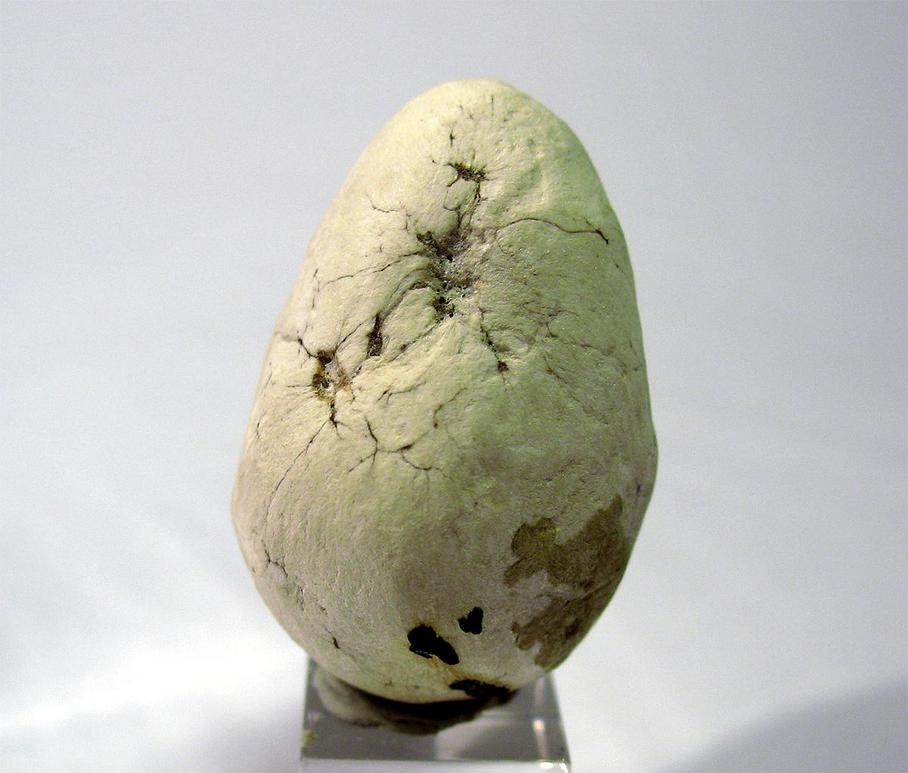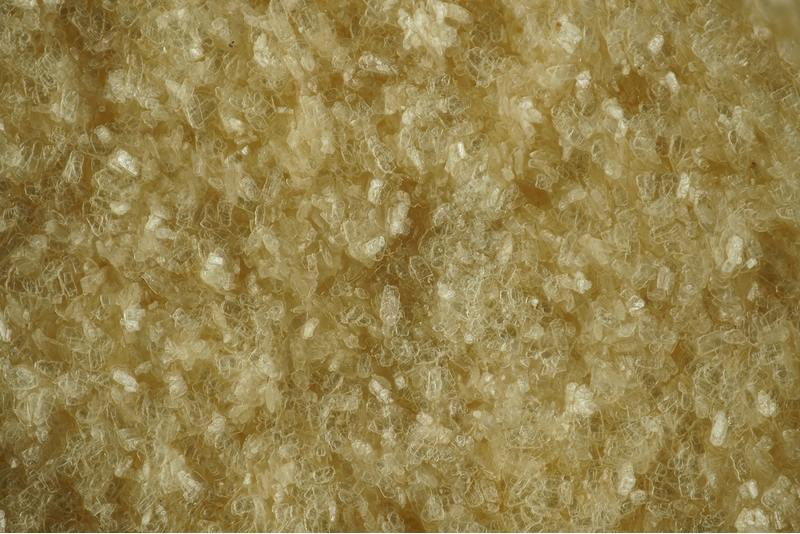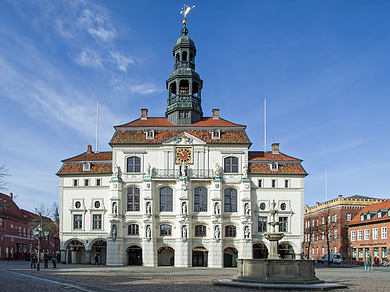Lüneburgite
A valid IMA mineral species - grandfathered
This page is currently not sponsored. Click here to sponsor this page.
About Lüneburgite
Formula:
Mg3[B2(OH)6](PO4)2 · 6H2O
Colour:
White to brownish or green, colorless
Lustre:
Vitreous
Hardness:
2
Specific Gravity:
2.05
Crystal System:
Triclinic
Name:
After the type locality, Lüneburg, Germany.
Lüneburgite is found in clays with evaporite minerals (halite, sylvite, polyhalite, etc.) and has also been found in guano deposits.
Unique Identifiers
Mindat ID:
2458
Long-form identifier:
mindat:1:1:2458:3
GUID
(UUID V4):
(UUID V4):
76a97c81-fef9-499d-9c9b-bacb02598db4
IMA Classification of Lüneburgite
Approved, 'Grandfathered' (first described prior to 1959)
IMA Formula:
Mg3[B2(OH)6(PO4)2] · 6H2O
First published:
1870
Classification of Lüneburgite
6.AC.60
6 : BORATES
A : Monoborates
C : B(O,OH)4, without and with additional anions; 1(T), 1(T)+OH, etc
6 : BORATES
A : Monoborates
C : B(O,OH)4, without and with additional anions; 1(T), 1(T)+OH, etc
43.5.11.1
43 : COMPOUND PHOSPHATES, ETC.
5 : Hydrated Compound Phosphates, etc·, Containing Hydroxyl or Halogen
43 : COMPOUND PHOSPHATES, ETC.
5 : Hydrated Compound Phosphates, etc·, Containing Hydroxyl or Halogen
10.2.1
10 : Borates with other anions
2 : Borates with phosphate or arsenate
10 : Borates with other anions
2 : Borates with phosphate or arsenate
Mineral Symbols
As of 2021 there are now IMA–CNMNC approved mineral symbols (abbreviations) for each mineral species, useful for tables and diagrams.
| Symbol | Source | Reference |
|---|---|---|
| Lbu | IMA–CNMNC | Warr, L.N. (2021). IMA–CNMNC approved mineral symbols. Mineralogical Magazine, 85(3), 291-320. doi:10.1180/mgm.2021.43 |
Physical Properties of Lüneburgite
Vitreous
Transparency:
Translucent
Colour:
White to brownish or green, colorless
Hardness:
2 on Mohs scale
Cleavage:
Poor/Indistinct
Prismatic cleavage with an angle of about 73° (viewed microscopically). Minute pseudo-hexagonal plates.
On {010}, fair.
Prismatic cleavage with an angle of about 73° (viewed microscopically). Minute pseudo-hexagonal plates.
On {010}, fair.
Density:
2.05 g/cm3 (Measured) 2.204 g/cm3 (Calculated)
Optical Data of Lüneburgite
Type:
Biaxial (-)
RI values:
nα = 1.520 - 1.522 nβ = 1.540 - 1.541 nγ = 1.545 - 1.549
2V:
Measured: 63° , Calculated: 62° to 60°
Max Birefringence:
δ = 0.025 - 0.027

Image shows birefringence interference colour range (at 30µm thickness)
and does not take into account mineral colouration.
and does not take into account mineral colouration.
Surface Relief:
Low
Dispersion:
distinct to strong
Chemistry of Lüneburgite
Mindat Formula:
Mg3[B2(OH)6](PO4)2 · 6H2O
Crystallography of Lüneburgite
Crystal System:
Triclinic
Class (H-M):
1 - Pinacoidal
Space Group:
P1
Cell Parameters:
a = 6.3475(6) Å, b = 9.8027(11) Å, c = 6.2976(5) Å
α = 84.456(9)°, β = 106.402(8)°, γ = 96.400(9)°
α = 84.456(9)°, β = 106.402(8)°, γ = 96.400(9)°
Ratio:
a:b:c = 0.648 : 1 : 0.642
Unit Cell V:
372.69 ų (Calculated from Unit Cell)
Z:
1
Morphology:
Flattened masses and nodules with fine fibrous to earthy structure. Minute pseudo-hexagonal tablets.
Twinning:
Common, by rotation about [110].
X-Ray Powder Diffraction
Powder Diffraction Data:
| d-spacing | Intensity |
|---|---|
| 4.98 Å | (100) |
| 4.85 Å | (70) |
| 2.964 Å | (60) |
| 2.819 Å | (45) |
| 3.23 Å | (40) |
| 2.507 Å | (35) |
| 3.027 Å | (30) |
Geological Environment
Paragenetic Mode(s):
| Paragenetic Mode | Earliest Age (Ga) |
|---|---|
| Near-surface Processes | |
| 25 : Evaporites (prebiotic) |
Type Occurrence of Lüneburgite
Place of Conservation of Type Material:
Wroclaw University, Wroclaw, Poland, 1I-5734; National Museum of Natural History, Washington, D.C., USA, 162602.
Geological Setting of Type Material:
Gypsum-bearing marl.
Associated Minerals at Type Locality:
Reference:
Nöllner, C. (1870) Über den Lüneburgit. Sitzungsberichte der königlich bayerischen Akademie der Wissenschaften zu München, Band I: 291-293.
Synonyms of Lüneburgite
Other Language Names for Lüneburgite
German:Lueneburgit
Luneburgit
Luneburgit
Russian:Люнебургит
Simplified Chinese:硼磷镁石
Spanish:Lueneburgita
Luneburgita
Luneburgita
Traditional Chinese:硼磷鎂石
Related Minerals - Strunz-mindat Grouping
| 6.AC.05 | Sinhalite | MgAl(BO4) |
| 6.AC.10 | Pseudosinhalite | Mg2Al3(BO3)2(OH)O3 |
| 6.AC.15 | Béhierite | (Ta5+,Nb5+)(BO4) |
| 6.AC.15 | Schiavinatoite | (Nb,Ta)(BO4) |
| 6.AC.20 | Frolovite | Ca[B(OH)4]2 |
| 6.AC.25 | Hexahydroborite | Ca[B(OH)4]2 · 2H2O or CaB2O4 · 6H2O |
| 6.AC.30 | Henmilite | Ca2Cu[B(OH)4]2(OH)4 |
| 6.AC.35 | Bandylite | Cu[B(OH)4]Cl |
| 6.AC.40 | Teepleite | Na2[B(OH)4]Cl |
| 6.AC.45 | Moydite-(Y) | Y[B(OH)4](CO3) |
| 6.AC.50 | Carboborite | Ca2Mg[B(OH)4]2(CO3)2 · 4H2O |
| 6.AC.55 | Sulfoborite | Mg3[B(OH)4]2(SO4)(OH,F)2 |
| 6.AC.65 | Seamanite | Mn2+3[B(OH)4](PO4)(OH)2 |
| 6.AC.70 | Cahnite | Ca2[B(OH)4](AsO4) |
Other Information
IR Spectrum:
Bulganak volcano material [cm-1]: 3495, 3440, 3390s, 3250sh, 3215, 3100, 2965, 2625w, 1665, 1325sh, 1283, 1185, 1122s, 1075s, 973, 891s, 830sh, 783, 712, 664, 638, 576, 537, 520sh, 462w
Health Risks:
No information on health risks for this material has been entered into the database. You should always treat mineral specimens with care.
Internet Links for Lüneburgite
mindat.org URL:
https://www.mindat.org/min-2458.html
Please feel free to link to this page.
Please feel free to link to this page.
Search Engines:
External Links:
Mineral Dealers:
References for Lüneburgite
Reference List:
Larsen, Esper S. (1921) The microscopic determination of the nonopaque minerals. Bulletin Vol. 679. US Geological Survey doi:10.3133/b679 p.103
Gupta, P. K. Sen, Swihart, George H., Dimitrijevic, R., Hossain, M. B. (1991) The crystal structure of lüneburgite, Mg3(H2O)6[B2(OH)6(PO4)2]. American Mineralogist, 76 (7-8) 1400-1407
Localities for Lüneburgite
Locality List
 - This locality has map coordinates listed.
- This locality has map coordinates listed.
 - This locality has estimated coordinates.
ⓘ - Click for references and further information on this occurrence.
? - Indicates mineral may be doubtful at this locality.
- This locality has estimated coordinates.
ⓘ - Click for references and further information on this occurrence.
? - Indicates mineral may be doubtful at this locality.
 - Good crystals or important locality for species.
- Good crystals or important locality for species.
 - World class for species or very significant.
(TL) - Type Locality for a valid mineral species.
(FRL) - First Recorded Locality for everything else (eg varieties).
- World class for species or very significant.
(TL) - Type Locality for a valid mineral species.
(FRL) - First Recorded Locality for everything else (eg varieties).
All localities listed without proper references should be considered as questionable.
Chile | |
| Gupta et al. (1991) |
| SEM-EDS by Igor V. Pekov | |
China | |
| Dongyan Wei (1985) | |
Germany | |
| Braitsch (1961) |
| C. Noellner: "Über Lüneburgit" (1876) +1 other reference |
| Nöllner (1870) |
| F. Heide & E. Bader (1964) |
Serbia | |
| Econ Geol (1992) |
Turkey | |
| Helvaci et al. (2004) |
| Ortı́ et al. (2002) |
Turkmenistan | |
| Evseev (1995) |
| Mineralogical Society of America - ... | |
Ukraine | |
| Shnykov E.F. at al. (1971) |
USA | |
| Field collected by Gunnar Färber |
| Palache et al. (1951) |
| Palache et al. (1951) | |
| Mineralogical Society of America - ... |
Quick NavTopAbout LüneburgiteUnique IdentifiersIMA Classification Classification Mineral SymbolsPhysical Properties Optical Data Chemistry Crystallography X-Ray Powder DiffractionGeological EnvironmentType Occurrence SynonymsOther LanguagesStrunz-MindatOther InformationInternet Links References Localities Locality List







 symbol to view information about a locality.
The
symbol to view information about a locality.
The 



Volgershall, Lüneburg, Lüneburg District, Lower Saxony, Germany